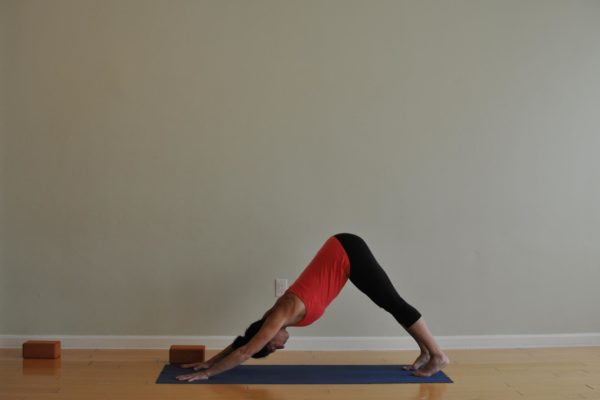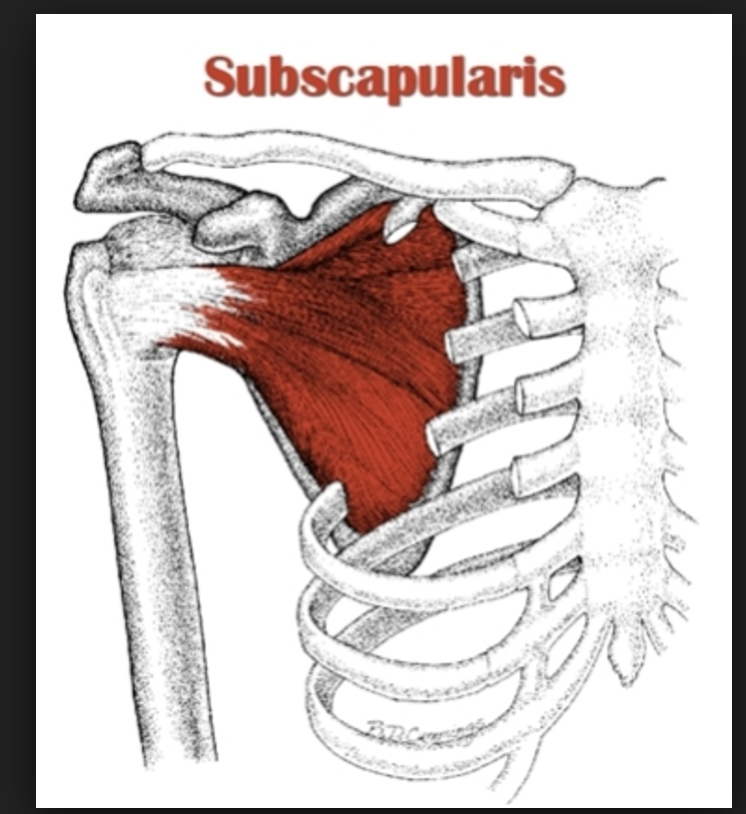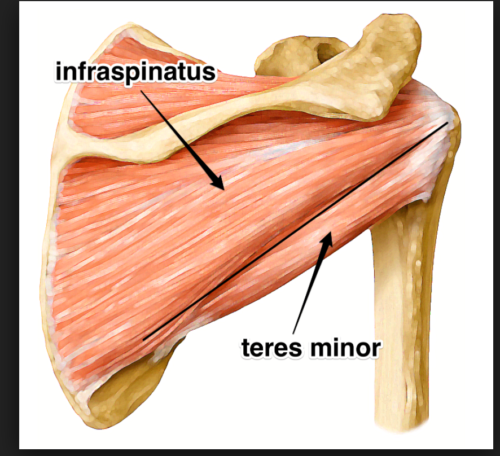
Think about what you do all day. And then think about how you first position yourself when you go into yoga class. If you’re a teacher, think about the most common pose you most likely start your classes with, if not initially, certainly after maybe one or two other poses. I’d be willing to bet that for many teachers, the pose that most often starts the class is Downward Dog. If not, bravo for you! I would further suggest that starting in Downward Dog can be a really stressful position for many students and one that further encourages an action that they do all day: hunching or internally rotating their shoulders.
I think when you ask people to hunch, they know what that means. They might drop their gaze, roll their shoulders inward and let their arms hang down. When doing that, many people might not know it but they’re internally rotating their shoulders. That action of internal rotation is primarily done by a muscle called the subscapularis. This muscle sits on the inside of the shoulder blade (please note the view below is of the RIGHT shoulder, looking at the front of the body):

Because we hunch so much, over our desk and phones, this muscle and related, nearby muscles that share this function, get pretty shortened. It also means that for many of us, we get used to that feeling of hunching and not as familiar with the feeling of standing up, let alone taking the tops of the shoulders back and down the back.
When we look at a pose like Downward Dog or any pose where we are facing the ground, we are asking our body to fight the urge to hunch. We’re not only “palms down” which encourages hunching, but we’re also fighting gravity so it’s even harder. Unless we’re aware of the counteraction to hunching and unless these muscles are strong enough, it’s hard to resist the urge to hunch.
So, let’s look at the muscles that externally rotate the shoulders. Primarily, we’re referring to the teres minor and the infraspinatus. Both of these muscles connect your shoulder blade to your upper arm bone. Now, you might say, “How can a muscle that connects to your arm effect your shoulder?” Well, I’ll bet you know the answer and you just don’t realize it. Your humerus (upper arm bone) sits in your shoulder joint and is part of that joint’s infrastructure. As a result, any muscle that connects to your humerus can effect the position of your shoulder.
In the case of the teres minor and the infraspinatus, they both work to turn your humerus outward, or externally rotate it. If you roll the humerus outward, by default, you’re externally rotating your shoulder. Let’s look at the teres minor and the infraspinatus. This view below is from the back of the body and is the right shoulder:

You can imagine that as these two muscles contract, because they both insert on the humerus, they will roll the shoulder back or externally rotate it because of their pull on the upper arm. They act to roll the upper arm back, thus externally rotating the shoulder.
So, now that we know that, what can we do to help our students strengthen these muscles? First, we need to tune them into their existence in the first place. I like to have people sit up and stretch their arms out in front of them. I ask them to spread their palms, as if they were in Plank Pose, but instead they’re sitting up with their arms outstretched. In this way, they can rotate their hands in and out and see and feel the effect on their shoulders.
I then have them come into Tabletop Pose, and keeping their gaze down at their hands, press into the floor and without moving their hands, press outward with both hands. This activates these muscles and will allow students to feel the contraction of the external rotators. I then move them into Plank and have them do the same thing. We then up the ante and I have them move from High to Low Push Up, while trying to keep some of that external rotation happening as they lower. This is usually the hardest part because moving from High to Low Push up requires the collaboration of muscles in both the upper and lower body in order to move safely and seamlessly through to Upward Dog.
As there are many instances where students are “palm down” in yoga, once you walk people through an awareness of these muscles and the action of external rotation, they will have plenty of ways to strengthen these muscles simply by using them! Poses like Downward Dog, Plank, Tabletop, Crow, Half Moon, Side Plank and Upward Dog all ask for the shoulders to be externally rotated and give people lots of chances to strengthen them simply by using them.
If you enjoy learning about anatomy while you practice, you might like my class on Vimeo. For only $10, you get an hour long sequence filled with anatomy based tips.. much more than you’d get in a standard yoga class. You can download it here.Â
Thanks for reading and please visit my home page for lots of anatomy based content you can download for free!
